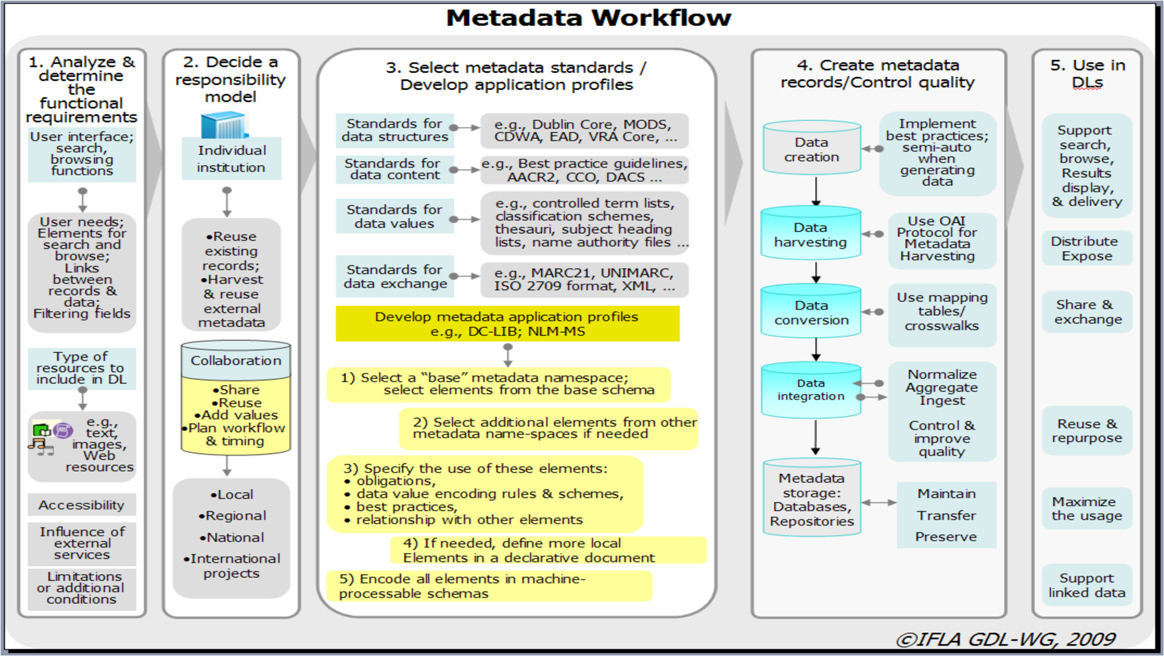Appendix A
Note: The survey results helped to generate a concise chapter on metadata which was submitted to the IFLA Guidelines for Digital Libraries WG. The authors would like to use this opportunity to thank all who participated. As a token of appreciation, a current version of the workflow chart is presented here. The final version of the Guidelines should be consulted when it becomes available.
The metadata process in a digital library should follow the following workflow.

Link to the larger-size version.
-
Analyze and determine the functional requirements relating to user needs, interface and features of search and browse, types of resources to be stored, granularity levels of descriptions, limitations or conditions, accessibility features, etc.
-
Decide on a metadata creation responsibility model. Will the metadata project be in-house or part of a cooperative project? Will previous records be reused? Will data be harvested from external sources? What and how should data resources (e.g., publisher-provided, user-contributed, and auto-captured) be used?
-
Select the appropriate metadata standards and design a metadata application profile. Considerations should include the metadata element set, best practices guidelines and data content standards, data value standards, and authority files to be used to create metadata records. In an application profile, specify localized refinements, required encoding syntax rules, and recommended controlled vocabularies. Create or use crosswalks when multiple metadata element sets are involved. Application profiles should be encoded in machine-processable schemas following encoding standards in order to be implemented, registered, and exchanged correctly.
-
Create shareable metadata records and implement quality control from the beginning. Use tools for data input, data update, metadata harvesting, conversion, validation, and storage. Implement technologies to improve quality of existing metadata for maximized discovery and delivery of resources. Store, maintain, and preserve metadata.
-
Provide means to use, distribute, share and exchange metadata records, thereby making records available for harvesting by other organizations and aggregators. Consider metadata reuse, repurpose, and maximize their usage. Support linked data and create metadata so as to become linked data.